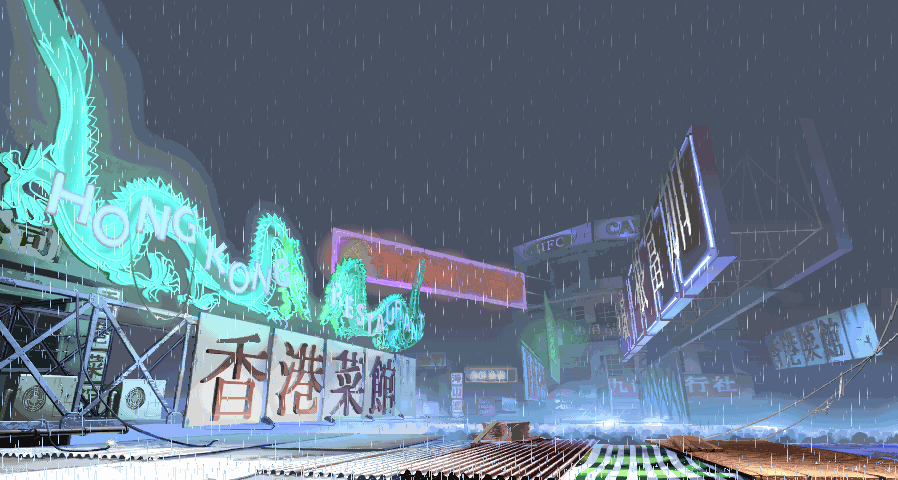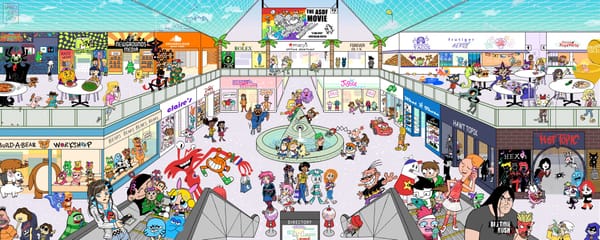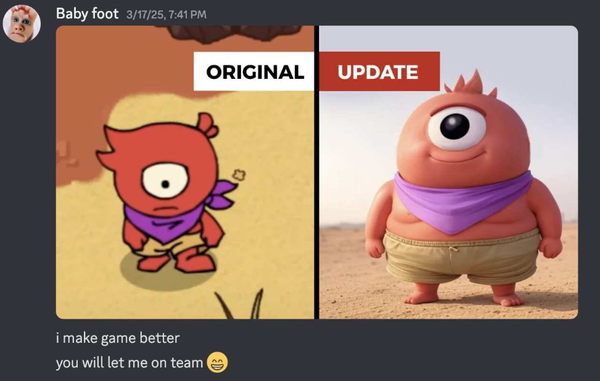All my beefs with Baldur’s Gate III, the game of the year
Grievances collected over 150 hours of sorting my inventory.
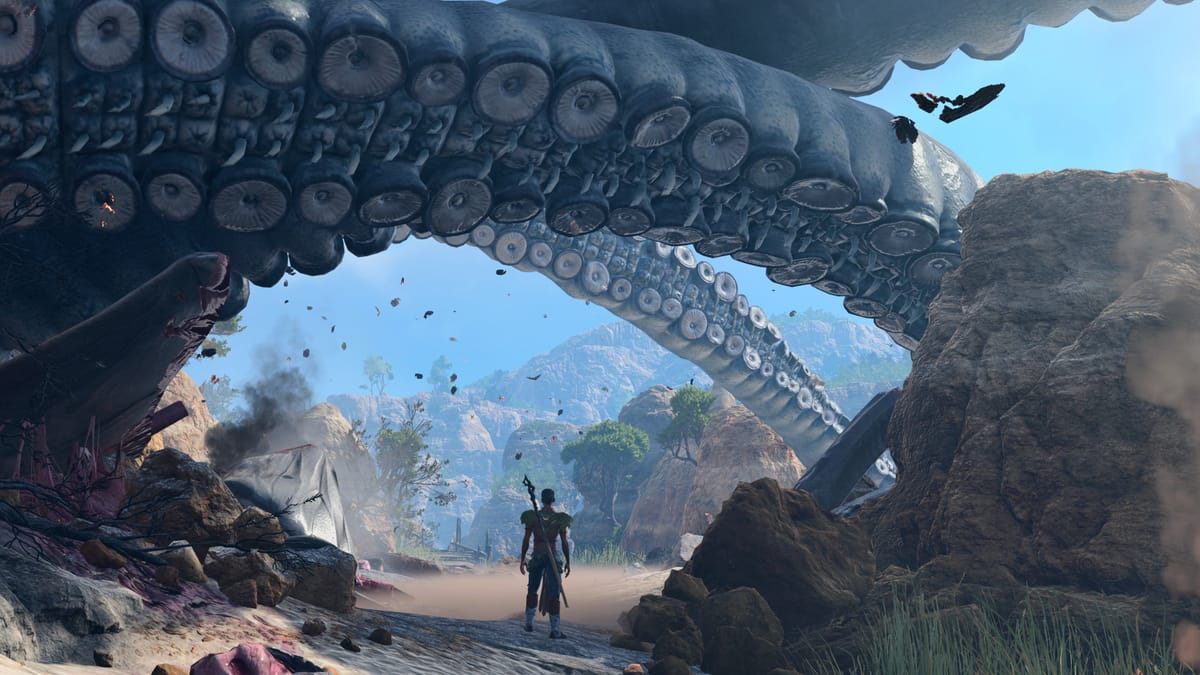
Like millions of other people, I’ve been completely absorbed with Baldur’s Gate III for the last few weeks — more in the zone than I was with Zelda or anything since Elden Ring. Baldur’s Gate brings back everything I was missing: the sense of grand adventure, the enormous quest-studded playspaces, and the thickets of story outcomes I remember from the golden age of CRPGs. But it also brings back the busted combat, broken questlines, and cursed inventories I remember from the golden age of CRPGs.
Don’t get me wrong. I think Baldur’s Gate III is good, and I agree with everything everyone else said. But the triumphant business story about BGIII (plucky RPG studio makes dream game, shaming giants that dream smaller) has drowned out some of the normal talk about the ups and downs of the thing we’re actually playing. It’s in the conversation with the best RPGs ever. But — speaking as a lifelong hater — I don’t think it’s one of the more interesting people in that conversation. Here are my many beefs with Baldur’s Gate III, the game of the year.
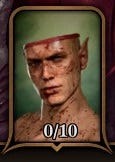
They haven’t finished making the game yet.
When you enter the last act of Baldur’s Gate III, the bugs hit you all at once. People in conversations start turning invisible. Momentous cinematics sometimes glitch out and skip to the end (even bypassing dialogue choices, which I wouldn’t have guessed was possible). Dialogue flags appear out of sequence and major events arrive back-to-back, creating a narrative traffic jam. Your companions may fail to react to events on the scale of a character death because they got stuck reacting to some previous incident. This isn’t just my experience — the game’s biggest fans have been urging each other to take it slow until Larian finishes building the road they’re driving on.
Divinity: Original Sin 2, Larian’s last game, had endgame issues too. Even after years of fixes and a Definitive Edition rerelease, its last act still feels like opening a bag of chips and seeing that half of it was air. In comparison, BGIII’s final chapter doesn’t lack for substance, and it’s all but guaranteed that the story triggers and camera issues will get cleaned up. But whether the devs will get their hands dirty reworking the pacing, beefing up the choice/consequence elements of what currently feels like a WIP ending, or giving companions a better sendoff (maybe in the vein of Mass Effect 3’s Citadel DLC) is less clear. If you want to see some massive spoilers about what they may or may not add, breakdowns of cut content have been popping up.
Regardless, it’s weird to play the game right now and give it credit for the story experience you imagine having, rather than what you actually got. “That event would’ve been cool if it had played at the right time and the characters in it didn’t act like someone was dead when they’re still alive.”
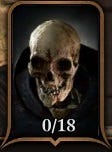
The AI is only pretending to do its job.
On Tactician, this game’s AI is still dumb as shit. I’ve seen a wizard drop a Silence bubble on himself, walk outside the bubble, then jump back inside it. I’ve seen enemy casters (even the mighty Lorroakan) waste turns Dashing around instead of unloading their heavy spells. I’ve seen guys freeze and do nothing the whole fight, or lose a turn because they stood stock still until some failsafe kicked in. I’ve seen dwarves cast Reduce on themselves and then run around trying to shove people like rowdy little brothers.
Enemies only seem to understand high ground as an opportunity for pushing, and archers will often leave it to run up right next to someone they could have shot from the rafters. They never seem interested in not walking through persistent AOE damage zones like Cloud of Daggers. (For whatever reason, they seem way more active when trying to knock their buddies out of CC effects like Hypnotic Pattern.) They get shaken up by your Attacks of Opportunity in odd ways: I’ve seen them take an AoO hit, change the direction they started running in, then end their turn after doing nothing. They don’t have any sort of plan to focus down particular party members. They just show up and let the good times roll.
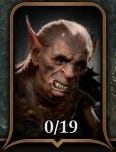
The conversation cinematics are basic.
Do you remember when The Witcher 3 came out, and everyone was blown away by how much the characters moved around during cinematics, used props, gestured, etc.? There were clever shots and mid-conversation changes in setting, slice-of-life bits where people decided to walk over to the birch trees or where Geralt just met cats for no reason1. Everyone hailed it as the new standard — we’re never going back to those static Bioware over-the-shoulder conversations where Shepard does the DreamWorks face!
Anyway, we went back. There’s a lot of talking in BGIII, but most of it has a simple sitcom shot/reverse shot flow that doesn’t add much visual imagination to what’s being said. The facial expressions can be clownish, and they often do a mechanical “gear shift” when a character reacts to new information. There are many silent reaction shots of the player character looking like a dumbass, which makes for an MST3K-style viewing experience for multiplayer spectators.
It added a lot when CDPR (and to a lesser extent Bioware) gave their scenes some direction. The Witcher 3’s cinematic flourishes gave its world more personality, made its characters more real, and added some immortal comic timing. It’s why the game is so replayable.
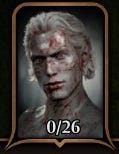
The choices you make aren’t very interesting.
One of the things Baldur’s Gate III will be best remembered for, I think, is its long chain of tiefling refugee quests. If you keep these characters alive, they pop up throughout the game to serve as merchants and continue their little storylines, with a lucky few making it all the way to Baldur’s Gate. You help them out in many missions, and they also blunder into some chaotic fights where you have to scramble to protect them (the game does cheat this a bit by killing some of the hard-to-save ones offscreen later2).
The thing is, there’s no reason not to help the tieflings. Screwing them over is evil for evil’s sake; there are no alternate paths with tempting rewards or other factions worth appeasing. This isn’t New Vegas. If you do turn against the tieflings, areas feel vastly emptier and less lived-in without them, you miss a ton of quests, you lose great items, and none of it is replaced by anything interesting.
Many people have already pointed out that, for non-Dark Urge characters, the game’s “evil” path is an illusion. Your decisions don’t make sense and you wind up fighting the same guys anyway. But even if you don’t go full evil, many of the game’s major choices are fake. The narrative payoff for refusing to use illithid powers/tadpoles all game is slight3, and doesn’t seem to reduce the number of boring conversations about the subject. The companion quest turning points (“should I be evil or not?”) can be rolled through on the spot even with weak approval, diminishing the significance of earlier conversations and the approval system itself.
The upshot is that the game writes checks that its ending can’t cash. The finale doesn’t approach the complexity or emotional impact of something like Mass Effect 2’s suicide mission (based on companion missions + some critical thinking about their relative skills), Dragon Age: Origins’ ending and epilogue (changes based on a bunch of hard calls in story quests + a knot of decisions at the Landsmeet), or The Witcher 3 (sidequest completion + choices + invisible “dad score” from smaller interactions). The only consequences I really cared about in BGIII were pass/fail: did you keep the tieflings alive?
A lot of the drama drains out of a Tav playthrough when you realize there’s one golden path through, and it’s mostly saying “no” when bad people ask you to do things, then winning a dice roll and a fight.
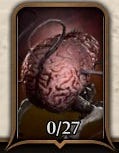
It’s not much of a dungeon crawler.
One of the cool things about old Baldur’s Gate II was that normal-looking quests would lead to much larger, more awful ordeals than you were expecting. An early quest sent you to de’Arnise Hold, which was absolutely dense with fights against trolls that kept regenerating until you used fire or acid, plus one golem that was immune to everything but crushing damage. Due to the timers on many of the game’s other quests, you felt locked in: you had to grind through stuff like this as you found it, however unfair it seemed, and couldn’t spam rests or run back to town without failing some other mission.
BGIII’s many unique encounters have much better quality control — nowhere in the game are you just rounding corners and starting a fight with Yet Another Troll. But it also tries to keep each little episode manageable, compressing its biggest dungeons into 3-4 encounters, and usually lets you leave them or long rest as much as you want. (There’s one I remember that you can’t warp out from, but it gives you a free long rest before the boss, which enraged me.)
This is maybe a fair reaction to the destructive dungeoneering addiction that runs through generations of CRPGs like alcoholism. But to me, Larian’s half-dungeons are no dungeons at all. They lack the harrowing resource management that gives meaning to every spell cast or not cast, the marathon length, the sense that you’ll never see sunlight again, etc., which are what make dungeons feel like a true test of your party and a meaningful expedition to return from.
The expansions for Baldur’s Gate I and II added the mega-dungeons Durlag’s Tower and Watcher’s Keep, which in modern times inspired Pillars of Eternity’s 15-level Endless Paths of Od Nua, which remains my favorite bit of that franchise. You also fell into Od Nua and had to fight your way back up a couple of levels before you could leave, which was a nice taste of old-school cruelty. For now I can only dream of a BGIII expansion adding a hell dungeon that disables fast travel and takes 30 hours to beat.
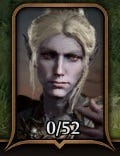
J.K. Simmons phoned it in.
The game’s voice acting is typically really good, rising to delightful when you talk to spiders, cats, and pigs. But J.K. Simmons, playing one of the game’s main villains, is notably less than delightful. He sounds like he could not give less of a shit about anything in the three scenes where he appears. He sounds like he’s falling asleep in the booth. The Chapo Trap House guys sounded better in the original version of Disco Elysium than the Oscar-winning, Spiderman-pictures-demanding Simmons does here. One of the most obvious fixes you could make to this game would be removing its most expensive talent and replacing him with anyone who voiced one of the talking animals.
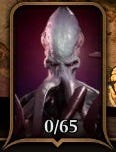
“These boots have seen everything.”
This is pedantic. When you click to make your character walk somewhere, they will often say “these boots have seen everything…” in response. I understand that they’re making a general “if these walls could talk…” statement. But it makes no sense. Your character will say it two minutes into the game, when their boots haven’t seen anything yet. They’ll say it again even if they’ve just put on a new pair of boots. They’ll keep slapping different pairs of boots and whooping about how much they’ve seen for 100 hours, like an absolute jackass. You might as well say that your hat has heard everything or your gloves have licked everything.

There’s too much groupthink.
A big part of the game’s reactivity comes from scenes where your party members sound off about recent events, but their reactions are often only superficially different. For example, I killed one of the game’s big villains early in Act Three4, and the battle was immediately followed by a dramatic scene with Karlach. Then when you go back to camp, all of your followers want to talk about how bad they feel for Karlach. You can go around chatting with everyone, and they all say stuff along the lines of:
- As a brutal alien warrior, I know what Karlach is going through…
- Karlach needs space…trust me, I’m a druid who has been on many adventures
- Take it from me, a talking animal – Karlach should remember that every dog has his day…
- Though I be an undead lich, even I must shed a tear for Karlach…
Some of these people would just not give a shit, right? They’re not all best friends. They’re not all “empaths.” It’s a failure of imagination that so many characters give you basically the same reaction flavored with one low-calorie identity packet.
And it’s weird that everyone had a fill-in-the-blank response about Karlach but missed the A1 headline about us killing one of the biggest bad guys. The “sorry for Karlach” reaction dialogue overwrote the “we achieved one of our biggest goals” round of campfire opinions before we even made it back to base. This storytelling collapse doesn’t seem like a bug, really — it’s the expected consequence of a system where every companion shares one thought about current events and then forgets it as soon as something else happens.
Most of the fun character stuff that’s woven into the game (Astarion’s Happy buff, Shadowheart’s fear of wolves, Karlach trashing the paladin house) comes from its more polished first act. Despite the quantity of talk, the game doesn’t invest as heavily in fleshing out its companions’ lives as Bioware titles like Dragon Age: Origins or the first two Mass Effects — for all their Whedonian excesses, they really thought about how the events of the plot might change each character, and built large, tricky conversations that were not obviously separated into Main Story and My Story tracks. They also took character diversity seriously enough that they didn’t have everyone try to jump on the player’s dick simultaneously at the same moment in Act One.
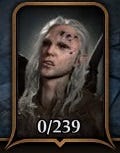
Companion variety could be better.
You’ve got two tough women who rebel against monstrous mother figures. You’ve got two people dying from magical afflictions. You’ve got two boring druids who join late game. That’s a lot of repetition for a smallish group of “real” companions.
The lack of a fun evil character also hurts me personally; there should have been a goblin companion. Astarion has some great line readings but is kind of a whiny trauma-plot guy. In theory, Minthara carries on the great RPG tradition of recruiting an old antagonist (Throne of Bhaal, Dragon Age: Origins, Chrono Trigger, etc.), but she has so little dialogue that she’s basically a hireling. Everyone else is sadly redeemable. There’s no real piece of shit around to give you the thrill that, like, Xzar and Korgan did.
One of the true power-gamer dreams (roleplayers DO NOT READ) is to play a mostly nice guy with a pure evil party. A reliable type who drives the corruption out of the holy sanctuary with the help of a bunch of extras from Jabba’s Palace who keep trying to bite whoever he’s talking to. This is more about being a spectator than a roleplayer; it’s more fun to surround yourself with rude people who will say anything than with virtuous types who say the obvious (“these monks will die if we do nothing”). I don’t really hold it against BGIII that you can’t have an evil party, as most other RPGs don’t allow it either. But the first two Baldur’s Gates do.
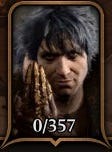
The difficulty falls off.
For me and many others, the high point of BGIII is the brilliant encounter design. There are a number of chewy encounters early (the gnolls, the githyanki patrol, the spectator) and midgame (various fights where you try to keep idiot NPC friendlies alive). The variety of enemies in the game (including some one-off appearances by dudes from the depths of the Monster Manual) is fantastic, and for a long time it makes a point of not repeating itself. Sprawling, complex areas like the goblin camp and Moonrise Towers are a joy to scope out for the first time, full of rafters and choke points and side rooms that will soon be slick with frozen blood.
But later on, your party can obliterate a lot of fights in one turn, trivializing all the unique mechanics and terrain. A paladin, the game’s most popular class, can start Act Three fights hasted, open with a guaranteed Crit/Paralyze combo, then attack like six times and tack on Smites whenever they feel like it5. There are totally broken Tavern Brawler and Warlock builds out there that will likely get patched. But no matter what, if you just stack buffs and deploy summons (which seem to confuse the temperamental AI), you can probably always cruise through Act Three.
My dream solution would be to slow the leveling way down so you don’t hit max level at the start of Act Three and to crowbar in some tough new dungeons and fights as an Act 1.5 or 2.5. I can imagine a lot of reasons why this might be impossible, but it would be nice to spend longer thrashing through low-level battles with some of the colorful items that you outgrow too quickly, like the Shattered Flail.
You could say that Baldur’s Gate III is about the journey, not the destination. But many RPG classics feature both a journey and a destination, a model that I prefer. (Also the entire game is about hyping up your destination; it’s in the name.) BGIII tries to put together a monumental ending in the style of its inspirations, but doesn’t build up from a foundation of strong choices and consequences; and the result has been opened to the public while still visibly under construction, which kinda kills the magic.
Larian are masters of encounter and area design. The best areas of BGIII, like Rosymorn Monastery, are stuffed with invention and varied in tone — confident light work, like the drunk kobold fight and the douche-y eagles, alongside heavier notes in the room of the monks’ last stand and the cells of the crèche. But Larian haven’t yet matched the overarching storytelling achievements that RPG developers like Bioware, Obsidian, CDPR, Troika, and RGG Studio managed in their best games. And BGIII never reaches that Witcher 3 or Disco Elysium level of brilliance in individual scenes, where the writers dug in to find something special in every conversation and left scraps of genius in throwaway dialogue all over the place.
Anyway, I played the hell out of BGIII, and I’ll play it again when they fix it up.
You do meet a number of cool cats in BGIII. But here I mean giving more life and mystery to cutscenes by adding elements unrelated to their main subject. ↩
Here’s a SPOILER-FILLED list of important people who can casually die in battle. The frontline defenders likely to die in the big Act One battle, like Arka, mostly get “cleaned up” kinda cynically via offscreen deaths soon afterward, so many don’t seem to have longer questlines that you could miss. Zevlor is the main exception I can think of, as he’s in real Act One danger but has a lot of material afterward. Rolan and Cerys can die during the fight at the start of Act Two even if you win, and both have “real” quests if they live. If Isobel gets captured at the start of Act Two, almost everyone except Mol gets zombified, which is a “will you persist in this doomed world” scenario but also leads to a pretty fun fight. Jaheira can die at the start or end of Act Two. A lot of Harpers are also in harm’s way, but I don’t remember seeing any of their names again in Act Three. ↩
I’m guessing that the game originally made you look more like a vile illithid if you continued to use those highly suspicious tadpoles, but this was made into a voluntary transformation after people complained. ↩
Hard to explain this without ACT THREE SPOILERS: I killed Gortash at his coronation, which was hard, and I’m very proud of myself, but the game was not supportive of my decision at all. I think Jaheira was the only major character who commented on this insane public attack, although random citizens started shouting about the guy’s death as soon as I left the arena. Everyone acted like Duke Ravengard was dead even though he wasn’t. The gnome quests got messed up. I could list a bunch of other weird stuff that happened but it would just turn into a bug report. ↩
With a multiclass dip into fighter, which I think theorycrafters would say isn’t optimal. But it feels good! ↩


